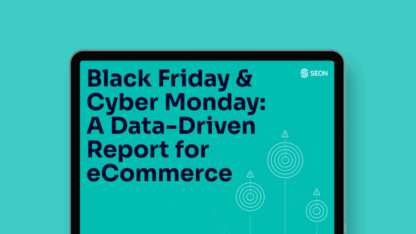With regulatory scrutiny increasing, financial institutions are under constant pressure to manage risk more effectively. The $1.3 billion fine levied against TB bank in October for AML failures was a stark reminder of what’s at stake.
Navigating the complexities of money laundering and terrorist financing prevention can often feel like fishing in opaque waters, especially when some threats don’t reveal themselves through Customer Due Diligence (CDD) and KYC verification, foundational in risk assessments. That’s where adverse media screening comes in — helping compliance teams stay ahead by spotting reputational and financial crime risks before they escalate.
What Is Adverse Media Screening?
Adverse media screening, or negative news screening, continuously scans global media, watchlists, and sanctions databases for risks linked to individuals or entities. Unlike one-time checks, real-time systems ensure evolving risk assessments. Effective programs integrate screening into onboarding, monitoring, and due diligence, minimizing manual work.
Key components include:
- Automated real-time media monitoring with alerts
- Watchlist and sanctions screening
- Risk-triggered due diligence workflows
- Automated alerts to streamline processes
- Clear reputational risk policies for compliance
Discover its role in AML compliance, key challenges, and best practices in our guide.
Read More
Key Features of Adverse Media Screening Software
The best real-time adverse media monitoring software should deliver actionable insights with minimal noise. When evaluating solutions, look for these core features:
- Entity-based article grouping to reduce irrelevant matches
- Regulatory taxonomies that align with Financial Action Task Force (FATF) and regional compliance frameworks
- Dynamic screening that adapts frequency and depth based on risk profiles
- Automated workflows that minimize repetitive manual research
Top Adverse Media Screening Software & Tools
SEON
This leading fraud prevention and AML solution was initially founded to solve fraud problems in the crypto space and has matured into a dynamic solution that currently protects over 5,000 global companies. Using real-time digital footprint analysis, device intelligence, and a customizable AI-driven rules engine, SEON helps businesses detect and prevent threats. Specializing in iGaming, fintech, financial services, payments and ecommerce, SEON has prevented $200 billion in fraud. It is highly trusted, with over 300 positive reviews on G2, Capterra and AWS Marketplace.

Features:
- One unified solution: SEON unites fraud prevention, compliance and risk management into a single, powerful solution. Its adverse media capabilities cover onboarding, ongoing monitoring and risk review stages. SEON empowers teams with contextual fraud insights, collaborative case management and highly configurable risk controls, significantly enhancing detection accuracy and operational efficiency across the customer lifecycle.
- Extensive real-time data collection: Aggregates and analyzes 30-40 million articles daily from 900+ first-party data signals, including international news outlets, sanctions databases, PEP lists, social media and legal records to ensure immediate risk identification.
- Industry-leading AI-driven contextual insights: Combines advanced Natural Language Processing (NLP) to automate Named Entity Recognition (NER). Context-driven machine learning models significantly reduce false positives by highlighting genuine risks aligned to a FATF-aligned financial crime taxonomy.
- Deep risk detection through knowledge graph: Powered by a comprehensive knowledge graph encompassing 500 million+ entities, specifically designed to uncover hidden connections and risks that may not be immediately evident from standalone media mentions, enhancing proactive risk management capabilities.
- Adaptable and customizable risk rules: This feature provides highly configurable screening parameters, allowing compliance teams to fine-tune risk detection rules according to specific business and regulatory needs. Users can define flexible fuzzy matching settings and adjust scoring thresholds to balance precision and recall effectively, minimizing false positives while capturing meaningful matches.
- Speedy integration and reporting: Easy single API connection with dedicated customer support for smooth setup, transparent audit-ready reporting, and machine learning that filters false positives and elevates relevant risks in media mentions.
Skip manual searches and instantly access PEP, RCA, sanctions, crime lists, watchlists, and adverse media—all in one platform.
Speak with an expert
LSEG Data & Analytics
LSEG Data & Analytics, a division of the London Stock Exchange Group, delivers comprehensive financial market data and regulatory intelligence. Following its 2021 acquisition of Refinitiv, LSEG significantly broadened its portfolio, providing enhanced data solutions, trusted market insights, and advanced risk management tools to support financial institutions in making informed decisions.
Dow Jones Risk and Compliance
Operating since 1882 and headquartered in New York, Dow Jones Risk & Compliance is a division of Dow Jones, a global provider of news and business information. Leveraging its rich media heritage, it offers advanced third-party risk management solutions, helping compliance teams identify hidden risks through trusted, curated data and insights.
Lexis Nexis Risk Solutions
Founded in 1970 and headquartered in Atlanta, Georgia, LexisNexis Risk Solutions specializes in advanced data analytics for fraud prevention, compliance, and financial crime risk management. A trusted partner to government agencies, banks, and global corporations, it delivers innovative, data-driven solutions that enhance decision-making and reduce risk across complex environments.
Acuris Risk Intelligence
Founded in 2000 and headquartered in London, Acuris Risk Intelligence specializes in curated risk data, serving financial institutions and multinational enterprises. Its research-led approach helps organizations detect hidden relationships and emerging risks, enhancing compliance and risk management strategies.
Napier
Launched in 2015 in London, Napier provides next-generation AML and compliance solutions for financial institutions and fintechs. Its machine learning-powered platform is designed for speed, adaptability and accurate adverse media screening.
Moody’s Analytics
Moody’s empowers organizations to thrive amid uncertainty by delivering expert analysis, rich data, and cutting-edge tools. With over 115 years of experience, it offers ratings, research, KYC/AML solutions, and decision support. Moody’s transforms complexity into clarity, helping businesses manage exponential risk and act with confidence across global markets.
How to Perform Adverse Media Screening
Adverse media screening is critical to any AML strategy, but getting it right takes more than just running occasional searches. The most effective programs use automated adverse media screening tools that constantly scan global sources for emerging risks. Real-time adverse media monitoring software takes this further, enabling compliance teams to stay proactive rather than reactive. Instead of drowning in irrelevant alerts or scrambling through manual research, these systems surface the most relevant media mentions by grouping articles around entities and filtering out noise. Solutions can also adjust how often an individual or business is screened based on evolving risk scores, ensuring that teams focus attention where it matters most.
How to Choose an Adverse Media Monitoring Solution?
Given the number of options on the market, choosing the right adverse media monitoring solution can feel overwhelming. The best approach is to focus on what truly matters for your compliance team: accuracy, efficiency and adaptability. Look for solutions beyond simply pulling in headlines — the platform should intelligently group relevant content and filter out noise so your team isn’t bogged down by false positives.
Easy integration is another key factor; real-time data is only valuable if it fits smoothly into your existing onboarding and monitoring processes. Ensure the platform aligns with FATF predicate offenses and local regulations so you’re never left with gaps in compliance.
And most importantly, ensure the tool supports automated updates and dynamic screening that evolves alongside your business.
It enhances due diligence by uncovering risks traditional screenings might miss and supports proactive regulatory reporting.
When selecting AML-focused adverse media compliance software, key features to consider include AI-powered filtering and contextual analysis to reduce false positives, entity-level aggregation for a comprehensive view of risk, and regulatory taxonomy mapping to align with compliance requirements. Live data updates ensure assessments remain current, while flexible alert configurations allow teams to tailor notifications to their specific risk tolerance.
The right tool depends on your industry and needs. SEON is particularly well-suited for fintechs, digital banks, and high-growth online lenders thanks to real-time monitoring and intelligent risk detection.









